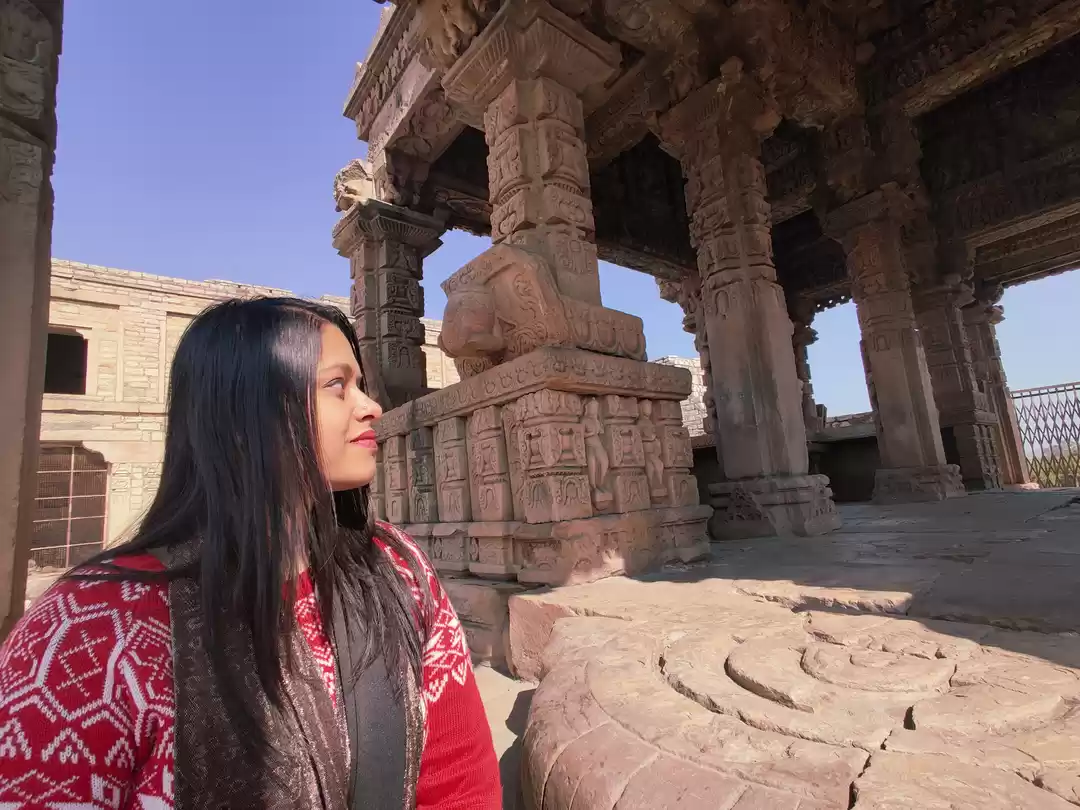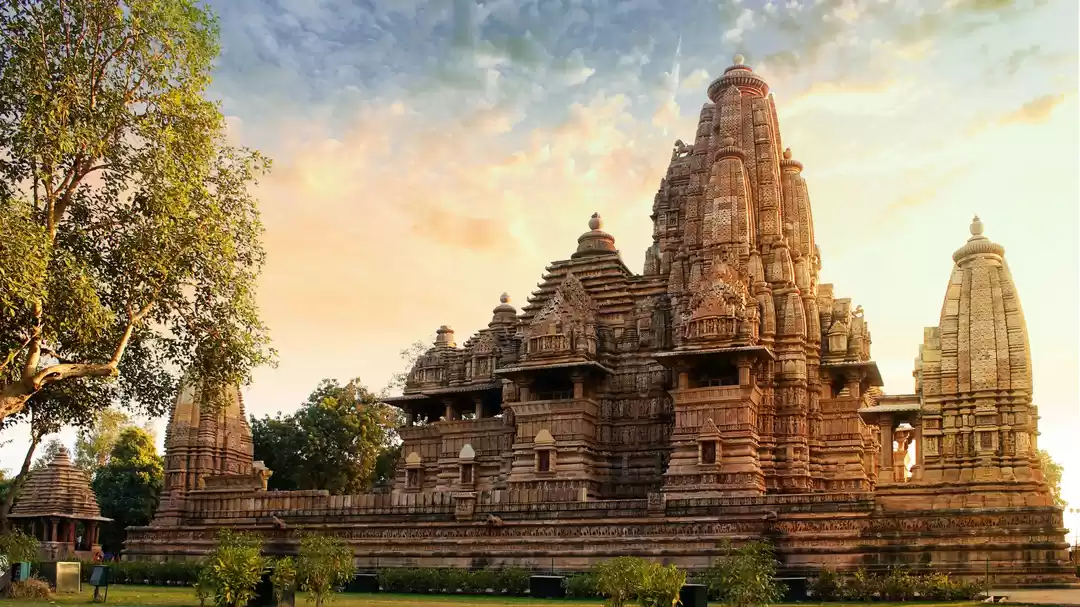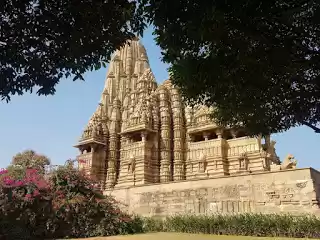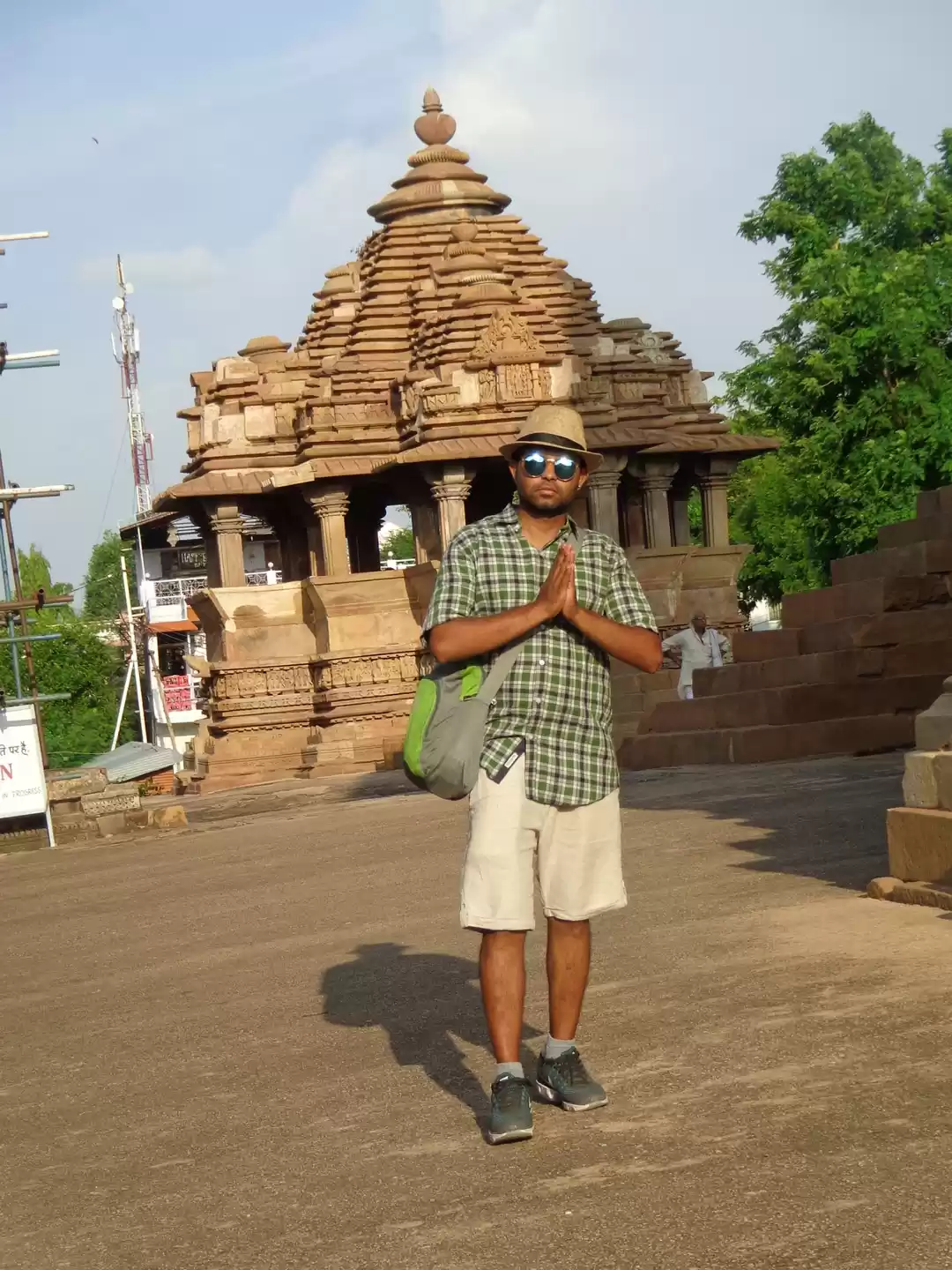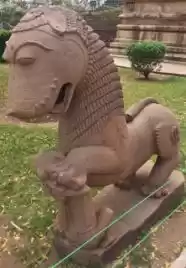
"Khajuraho, where art takes form in stone, and history whispers its secrets through intricate carvings."
Welcome to the mesmerizing world of Khajuraho, a place where ancient art and architecture weave a captivating tale of beauty, sensuality, and spiritual mystique. Stepping into Khajuraho is like entering a time capsule that transports you back to the medieval era of the Chandela dynasty, which thrived between the 10th and 12th centuries.
In this blog, we will delve deeper into the captivating world of Khajuraho, unraveling the stories behind its temples, exploring the historical context, and uncovering the mysteries that continue to fascinate visitors from around the globe.
Khajuraho is a small town located in the Chhatarpur district of Madhya Pradesh, India. It is famous for its group of ancient Hindu and Jain temples, which are collectively known as the Khajuraho Group of Monuments. These temples are renowned for their intricate and explicit carvings depicting various aspects of human life, including love, sensuality, and spirituality.

The Khajuraho temples were built between the 10th and 12th centuries by the Chandela dynasty. Originally, there were around 85 temples, but over time, only about 20 of them have survived. These temples are now recognized as a UNESCO World Heritage Site and are considered one of the finest examples of medieval Hindu and Jain architecture in India.
The temples of Khajuraho are divided into three groups: the Western Group, the Eastern Group, and the Southern Group. The Western Group, which includes the most significant and well-preserved temples, is the main attraction for visitors. Some of the notable temples in the Western Group include the Kandariya Mahadeva Temple, the Lakshmana Temple, and the Chausath Yogini Temple.
History of Khajuraho
The history of Khajuraho dates back to the period between the 10th and 12th centuries, when the temples were constructed. The town was the capital of the Chandela dynasty, which ruled over the region in central India during that time.

The Chandela rulers were known for their patronage of art, culture, and religion. It is believed that the construction of the temples at Khajuraho was part of their ambitious building program, aimed at showcasing their power, wealth, and devotion to the deities.
In 1986, the Khajuraho Group of Monuments was designated a UNESCO World Heritage Site, recognizing its cultural and historical significance. Since then, the temples have attracted tourists from all over the world who come to marvel at their architectural beauty and intricate carvings.
Today, Khajuraho stands as a testament to the rich cultural heritage of India and serves as a reminder of the artistic and architectural achievements of the Chandela dynasty. It is considered one of the most important historical and archaeological sites in India.
How to Reach Khajuraho
Khajuraho is well-connected by various modes of transportation, including air, rail, and road. Here's how you can reach Khajuraho:
By Air: The fastest and most convenient way to reach Khajuraho is by air. The Khajuraho Airport (IATA: HJR) is located about 5 kilometers away from the town center. It has regular flights connecting to major cities in India, including Delhi, Mumbai, Varanasi, and Agra.

By Train: Khajuraho has its own railway station called Khajuraho Railway Station (Station code: KURJ), which is well-connected to major cities in India. However, the rail network is limited, and there are only a few direct trains to Khajuraho. Alternatively, you can take a train to nearby Jhansi Junction or Mahoba Railway Station, which have better rail connectivity, and then continue your journey to Khajuraho by road. From Jhansi or Mahoba, you can hire a taxi or take a bus to reach Khajuraho.
By Road: Khajuraho is well connected by road to major cities in Madhya Pradesh and neighboring states. State-run buses, private buses, and taxis are available for travel to Khajuraho. There are regular bus services from cities like Jhansi, Satna, Orchha, and Bhopal. If you prefer a more comfortable and private journey, you can hire a taxi or opt for a self-drive car.
Where to Stay in Khajuraho
Khajuraho offers a range of accommodation options to suit different budgets and preferences. Here are some popular places to stay in Khajuraho:
Luxury Hotels and Resorts:
• The Lalit Temple View Khajuraho
Cost - INR 6850/ per night for two persons.
• Radisson Jass Hotel Khajuraho
Cost - INR 7500/ per night for two persons.
Cost - INR 3900/ per night for two persons.
Cost - INR 3900/ per night for two persons.
Cost - INR 4800/ per night for two persons.
Mid-Range Hotels and Resorts:
Cost - INR 900/ per night for two persons.
• Usha Bundela
• Hotel Zen
Budget Hotels and Guesthouses:
• Hotel Isabel Palace
Cost - INR 1000/ per night for two persons.
• Hotel Gautama
• Hotel Surya
Cost - INR 600/ per night for two persons.
Homestays and Guesthouses:
• Khajuraho Homestay
• Krishna Cottage
• Green House Homestay
• Shivam Homestay
• Namaste Homestay
When choosing accommodation, consider factors such as location, amenities, reviews, and your budget. It's advisable to book your accommodation in advance, especially during the peak tourist season, to secure the best options.

Most hotels in Khajuraho are located in close proximity to the Western Group of Temples, making it convenient to explore the main attractions. Additionally, the town is relatively compact, so even if you choose accommodation slightly away from the main temple area, it can be easily accessible by taxi or auto-rickshaw.
Best Time to Visit Khajuraho
The best time to visit Khajuraho is during the winter months, from October to March. This period offers pleasant weather with moderate temperatures, making it comfortable for sightseeing and outdoor activities. The temperature during this time ranges from around 10°C (50°F) to 25°C (77°F).

What to Eat in Khajuraho
When it comes to food in Khajuraho, you can expect a variety of options that showcase the flavors of Madhya Pradesh and traditional Indian cuisine. Here are some popular dishes and places to try in Khajuraho:
Traditional Indian Cuisine:
• Dal Bafla: A local specialty of Madhya Pradesh, it consists of wheat flour dumplings (bafla) served with a rich lentil curry (dal).
• Sabudana Khichdi: A dish made with sago pearls, potatoes, peanuts, and spices, often consumed during fasting periods.
• Bhutte Ka Kees: A savory dish made with grated corn kernels, milk, and spices, cooked to a creamy consistency.
• Malpua: A sweet treat made with a batter of flour, milk, and sugar, deep-fried and served with syrup or rabri.

Restaurants and Eateries:
• Raja Cafe: Known for its rooftop seating and a wide range of Indian and international cuisines.
• Madras Cafe: Offers South Indian delicacies like dosas, idlis, and uttapams.
• The Mediterranean Restaurant: Serves Mediterranean and Italian dishes along with Indian options.
• New Punjab Family Restaurant: Specializes in Punjabi cuisine, including tandoori dishes and curries.
While exploring Khajuraho, you can also find several small local eateries and dhabas that serve authentic Indian dishes. Don't forget to try local sweets like jalebi, gulab jamun, and gajar ka halwa for a delightful dessert experience.
What to Shop from Khajuraho
Khajuraho offers a range of shopping opportunities where you can find unique souvenirs, handicrafts, and traditional items. Here are some things you can shop for in Khajuraho:
1. Stone Sculptures: Khajuraho is renowned for its stone carvings and sculptures. You can find small sculptures depicting deities, figurines, and replicas of the intricate carvings found in the temples. These make for beautiful and artistic souvenirs.
2. Textiles and Fabrics: Explore the local markets for textiles and fabrics, including traditional sarees, dupattas (scarves), and dress materials. Look for the famous Chanderi silk and Maheshwari sarees, known for their intricate weaving and elegant designs.
3. Tribal Art and Crafts: Madhya Pradesh is home to several tribal communities, and you can find handicrafts and artwork reflecting their unique cultural heritage. Look for tribal paintings, bamboo crafts, terracotta pottery, and tribal jewelry.
4. Pashmina Shawls and Stoles: Pashmina shawls and stoles made from fine, luxurious wool are popular items to purchase in Khajuraho. They are known for their softness, warmth, and intricate embroidery work.
5. Miniature Paintings: Look for miniature paintings depicting scenes from Hindu mythology, Rajasthani art, and Mughal-inspired designs. These intricate paintings on silk or paper make for beautiful wall décor or gifts.
6. Jewellery and Gemstones: Khajuraho offers a range of traditional Indian jewellery, including silver ornaments, beaded necklaces, and gemstone jewellery. Look for semi-precious stones like garnets, amethysts, and turquoise.
Shopping in Khajuraho allows you to bring home unique and culturally significant items that reflect the rich heritage of the region.
48 hours in Khajuraho

If you have 48 hours to spend in Khajuraho, here's a suggested itinerary to make the most of your time:
Day 1:
Morning: Start your day by visiting the Western Group of Temples, the main attraction in Khajuraho. Explore the Kandariya Mahadeva Temple, Lakshmana Temple, and other significant temples in this complex. Marvel at the intricate carvings and architectural brilliance.
Afternoon: Enjoy a delicious lunch at a local restaurant, savoring the flavors of Madhya Pradesh cuisine.
Visit the Archaeological Museum located near the Western Group of Temples. It houses a collection of sculptures and artifacts from the temple complexes, providing insights into the history and art of Khajuraho.
Take a stroll through the nearby Khajuraho village, observing rural life and interacting with locals.
Evening: Witness the mesmerizing Sound and Light Show held at the Western Group of Temples. The show narrates the history and legends associated with the temples, creating a magical ambiance.
Day 2:
Morning: Start early and head to the Eastern Group of Temples. Explore the Jain temples, such as the Parsvanatha Temple, Adinatha Temple, and the Ghantai Temple. Admire the architectural styles and intricate carvings dedicated to Jain deities.
Visit the nearby Brahma Temple and the Vamana Temple, which are located outside the Eastern Group complex.
Afternoon: Enjoy a leisurely lunch and savor local delicacies.
Explore the Southern Group of Temples, including the Dulhadeo Temple and the Chaturbhuj Temple. These temples are known for their unique architecture and sculptures. In addition to the temples, Khajuraho also offers a light and sound show in the evenings, which narrates the history and legends associated with the temples.
Take a relaxing walk in the beautiful Khajuraho Gardens, located near the Southern Group of Temples. Enjoy the peaceful surroundings and soak in the natural beauty.
Evening: If time permits, consider visiting the Raneh Falls, located around 20 km from Khajuraho. These magnificent waterfalls, formed by the Ken River, offer a breath-taking sight.
End your day by indulging in a traditional Indian dinner at a local restaurant, immersing yourself in the flavors and spices of the region.
Note: It's essential to check the timings and availability of attractions and shows in advance, as they may vary.

The temples of Khajuraho are known for their architectural grandeur, intricate carvings, and explicit sculptures. Despite the explicit nature of some of the sculptures, they are not merely erotic but are considered symbolic representations of life, love, and divinity. These sculptures are believed to depict the celestial nymphs, known as apsaras, as well as various deities and mythical creatures.
Overall, Khajuraho is a significant historical and cultural destination in India, attracting tourists from around the world who are interested in exploring its ancient temples and marvelling at the exquisite craftsmanship of the sculptures.
For more travel stories and information, follow me on YouTube & Instagram.
Ready to travel for free? Earn credits and redeem them on Tripoto's weekend getaways, hotel stays, and vacation packages !










